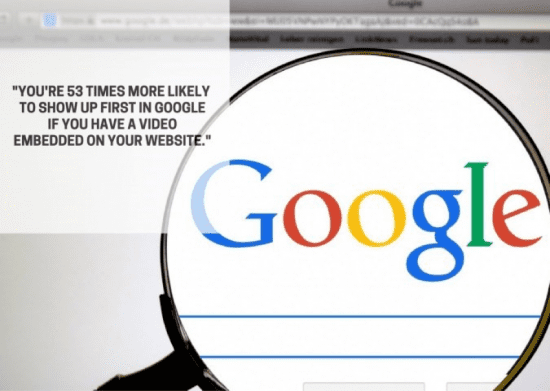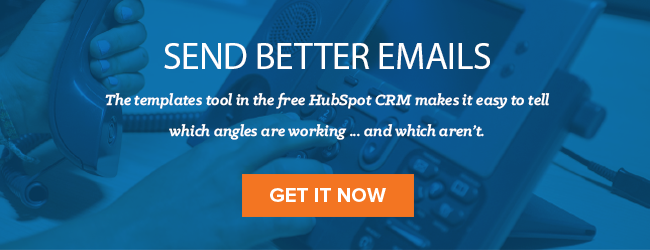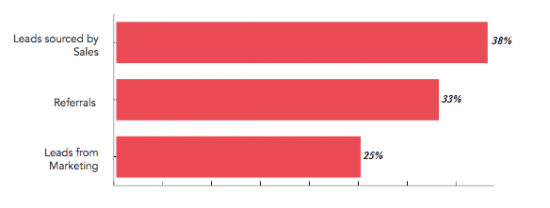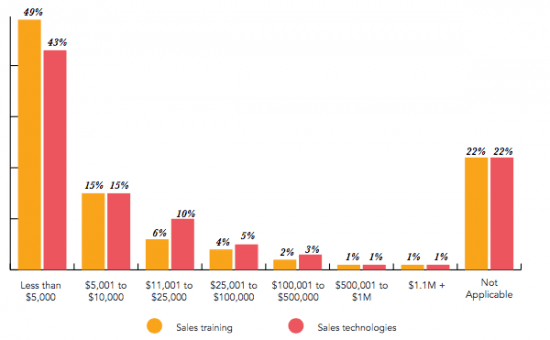When you think of impressive public speakers like Seth Godin, Simon Sinek, or Gary Vaynerchuk, one thing sticks out: Their passion for their topic.
That excitement is infectious and inspiring. It’s also the best way to attract and maintain audience attention.
Whether you want to expand your public speaking resume, or just get better at presenting in front of clients, these tips can help you meet your goals.
But remember, even if you master all 17, the most important thing you can do is to get fired up about your topic. Find an angle that excites you, and the rest will come.
17 Tips to Improve Your Public Speaking Skills
1) Define Your End Goal
The first thing to do when preparing a speech is to define your end goal. What do you want the audience to do after they leave the room? What information should they walk away with?
Once you’ve defined what you want your audience to take away, build your talking points around supporting that goal. This lends itself to a more focused and actionable speech that provides real value to your audience.
For example, let’s say a big conference has invited you to speak about how small businesses can grow their sales organizations. Start by nailing down your objective. If it’s getting the audience to hire you as a sales consultant, build your speaking topic around five things preventing small sales organizations from scaling.
2) Be a Giver, Not a Taker
Renowned speaker Simon Sinek says, “We are highly social animals. Even at a distance onstage, we can tell if you’re a giver or a taker, and people are more likely to trust a giver -- a speaker that gives them value, that teaches them something new, that inspires them -- than a taker.”
Once you’ve defined your end goal, build a presentation that offers real value to your audience, regardless of whether they pursue your product or service.
If you immediately and doggedly pitch your consulting service throughout your presentation, you’ll probably lose your audience’s trust, and the remainder of your presentation will lose its credibility.
Offer tips and strategies that will be fresh, useful, and insightful for your audience. And make any business pitches subtle and at the end of your presentation.
3) Make Slides an Aid, Not a Crutch
The American Speech-Language-Hearing Association recommends using keywords, instead of sentences or paragraphs on your slides. This helps your audience focus on your message. The ASHA also suggest bulleting body copy, using punctuation sparingly, and never using more than eight words per line or eight lines per slide.
Another rule of thumb is to make your font size double the average age of your audience. This means the font for most of your presentations will be between 60 and 80 points.
When it comes to the age-old question “Prezi or PowerPoint?”, a recent Harvard study suggests there is a right answer. Research shows that Prezi’s “focus on meaningful movement” makes it a more effective presentation medium than PowerPoint. So next time you want to impress your audience, give Prezi a try.
4) Practice (But Really, Practice)
Are you already rolling your eyes and skimming past this section? I don’t blame you. But so often, public speakers are under-prepared. Maybe your assistant created your slides and you’ve just scrolled through them a few times. Or maybe you’ve rehearsed your presentation by yourself, but haven’t run it by anyone else.
Make sure you’re practicing your presentation in front of several groups of people. Present to coworkers or to someone who represents your target audience. Ask for honest, critical feedback on the good, the bad, and the ugly of your presentation.
It’s also smart to record yourself during one of your practice runs, so that you can review areas that need work.
5) Eat Well & Burn Cortisol
Eating a protein-packed snack before a public speaking engagement boosts your energy, focus, and mood. But what if there were a way to decrease stress too?
Well, there is. Cortisol, also known as the "stress hormone," can interfere with your memory and limit your ability to process complex information. This can make it difficult to read your audience and react in the moment.
To decrease your cortisol levels, exercise one to three hours before you speak. You’ll feel less stressed and your audience will benefit from your focus.
6) Meet Audience Members First
It’s always a good idea to meet a few of your audience members before taking the stage.
This is a great way to calm pre-presentation jitters, not to mention network and recruit a few last-minute audience members into your meeting or session. Bonus points if you find a way to incorporate those conversations into your speech.
To illustrate, suppose you talked with Laura from XYZ Sales at the coffee bar this morning. If Laura shared that sales recruitment is a big roadblock to scaling their sales team, include this anecdote in your presentation, along with tips on how you would approach the situation.
7) Give Yourself Time to Acclimate
Many speakers begin talking immediately after being introduced or walking onstage. Instead, try approaching the stage in silence. This gives you time to gather your thoughts, take a deep breath, and get used to being in front of the audience.
It gives your audience the chance to get used to you as well. If they’re checking email or answering some last-minute texts, it provides a few buffer moments so they can wrap up. This pause also sets the tone for the rest of your speech, which should be evenly paced, effective, and purposeful.
8) Don’t Open with an Excuse
How many times have you heard a speaker start by saying, “Sorry, I didn’t have much time to prepare,” or “My flight was delayed last night, so I’m a little tired”?
Your audience doesn’t care. Announcing to them that you haven’t prepared or are tired from a long flight won’t change the way your presentation is received or remembered.
Don’t begin your presentation with an excuse. That makes the time about you, when it should be about your audience and how you can provide value to them.
9) Be Conversational
The first 30 seconds of a speaker’s presentation tell you almost everything you need to know about what’s next. That means you probably haven’t made it past introducing yourself before you’ve either lost or gained the attention of your audience.
So how do you make the most of that first few seconds? First, be conversational. Use inflection in your voice and engage in natural, friendly body language. Instead of staying glued to your podium, walk casually back and forth in front of your audience. Gesture with your hands and make eye contact with individual people in front of you.
Second, don’t memorize your content. You should understand the concepts you’re communicating and know the overall structure of your presentation, but don’t recite your speech word for word. You’ll seem rehearsed and less engaging.
10) Rejoice in the First Mistake
I once had an instructor who would openly rejoice when she made her first mistake in front of a large class. She said it took the pressure off for the remainder of her class, so she could simply relax and teach.
While I wouldn’t recommend calling out the first mistake you make in front of your audience -- they likely didn’t even notice -- it is something you can quickly take note of internally.
Don’t beat yourself up about it, feel embarrassed, or let it derail your composure. Simply acknowledge your first mistake and view it as permission to relax and move on with your presentation.
11) Tell Stories & Make It Personal
Think your audience doesn’t care about personal stories? Let me put it this way. They probably care more about the story you just told than the pie chart on the screen behind you.
Your audience is more likely to remember and share the stories you tell than the stats and figures you pack your slides with. Make your presentation personal, and remind them that you’re human.
Check out a few top TED Talks to learn how to flex your storytelling muscles. TED Talks are driven by powerful storytelling -- which is one of the reasons they’re so memorable. Stories also give your audience more context around your topic, heightening their ability to relate and find value in what you have to say. Basically, when in doubt, tell a story.
12) Channel Nervous Energy into Positive Energy
If you’re not excited about your presentation, why would your audience be? One way to channel excitement into your public speaking is to transform nervous energy into positive energy.
Simon Sinek has another great insight here. After watching reporters interview Olympic athletes, he noticed many of the athletes had similar responses when asked if they were nervous before competing. They answered, “No, I was excited.”
Sinek points out that they translated the body’s signals of anxiety or stress -- sweaty palms, neck tension, fast heartbeat -- as excitement. When Sinek’s onstage and notices these same signs, he says out loud to himself, “I’m not nervous, I’m excited!”
13) Speak Slowly & Pause Often
Speaking slowly is hard to do -- especially when you’re giving a presentation. But not only does a slower speed make it easier for your audience to understand, it also makes you seem more composed and thoughtful. Your pacing should feel a little unnatural. Only then have you probably found the right cadence.
Another way to control the pace of your presentation is to routinely pause for between three and five seconds. This length of pause remains conversational, while allowing you to take a breath and refocus before moving forward. As a bonus, it’s just long enough to get people to look up from their smartphones to see why you’ve stopped.
14) Repeat Audience Questions
Whether you’re working a large room or a three-person meeting, try to repeat audience questions. In large settings, it gives everyone a chance to hear what was asked, keeping them engaged with and invested in your answer.
In smaller settings, repeating audience questions gives you an extra few moments to gather your thoughts. More importantly, it ensures that you’ve understood what the question is and are actively listening to the needs of your audience members.
15) Reinforce Key Points
Repeating key points at multiple times throughout your presentation helps your audience retain what’s most important.
A simple technique for doing so? Mention each key point three times. Introduce your main points in the agenda you share at the beginning, speak to each point clearly during your presentation, and close by reviewing and restating your main points.
16) Use Video & GIF Sparingly
I know, I know -- this one is unpopular. GIFs and video can be a great way to break up your presentation and re-engage a drifting audience. But they can also distract listeners from the important points you’re making.
When appropriate, throw in a GIF or video. But make sure it aids in your storytelling, instead of distracting from it. A truly engaging public speaker will be able to present impactfully without gimmicks.
If you’re tempted to add a third GIF to your presentation, take a harder look at the quality of content you’re preparing. Could you illustrate that point better with a thoughtful anecdote or past experience?
17) Always End Early & Say Thanks
Whether your audience gave you five minutes of their attention or an hour, end early and say, “Thank you.” Time is a precious commodity, and they chose to spend a significant portion of it with you.
Be respectful of that time and always end early -- especially if you’re expecting a longer Q&A period. If people have questions, you want to make the most of every second before you lose them to the next session or meeting.
Public speaking is an art, and one that can take years to perfect. By following these tips for effective public speaking, you’ll start to notice benefits immediately. Want to continue your public speaking education? I mentioned Simon Sinek several times during this presentation. Check out his Skillshare class “Presentation Essentials: How to Share Ideas That Inspire Action” for more.





 All this may sound too good to be true. And for some people, it might be.
All this may sound too good to be true. And for some people, it might be.








































.png?t=1517984158199&width=640&name=pablo%20(9).png)
.png?t=1517984158199&width=640&name=pablo%20(10).png)













 About the Author
About the Author